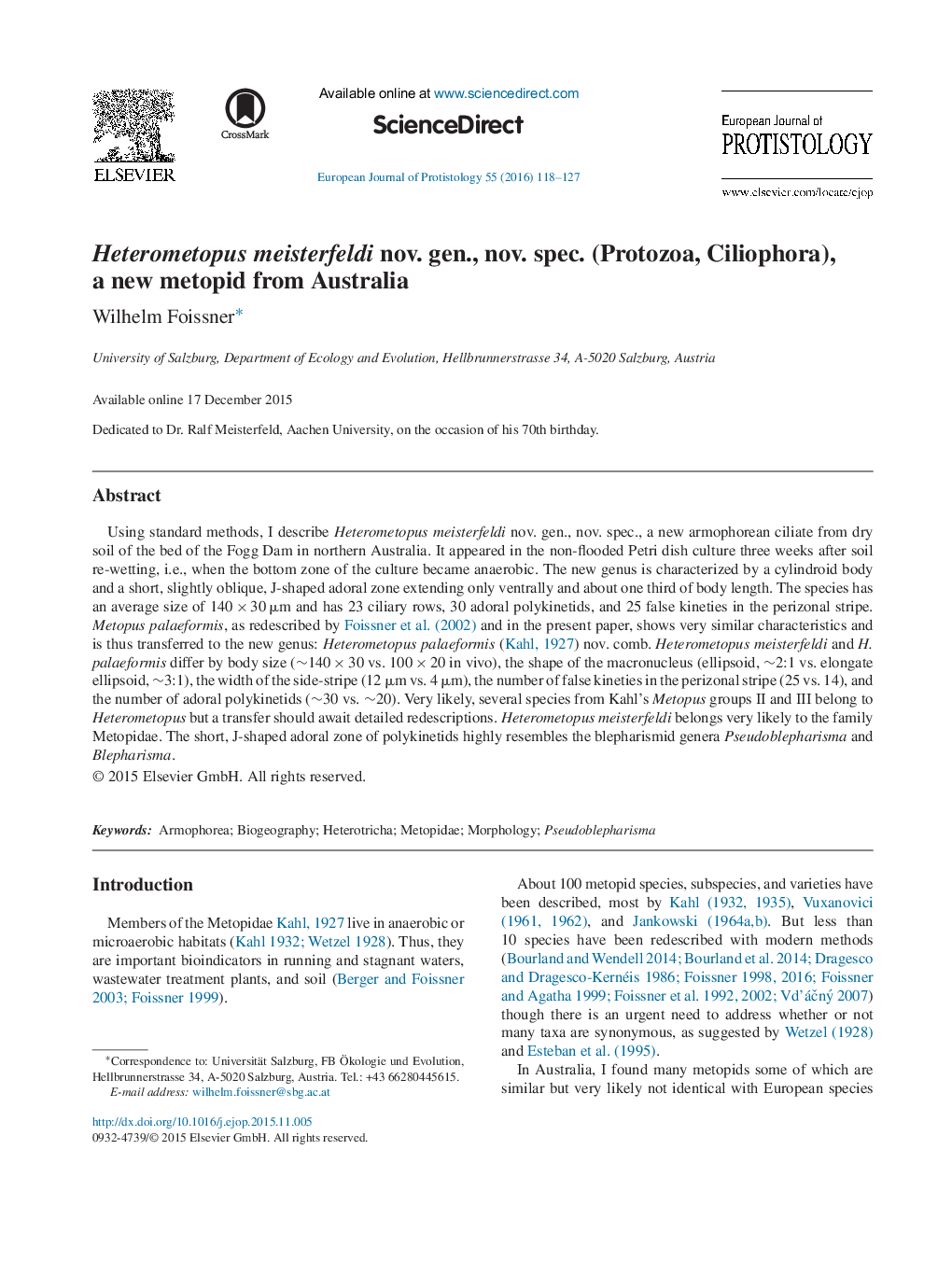| کد مقاله | کد نشریه | سال انتشار | مقاله انگلیسی | نسخه تمام متن |
|---|---|---|---|---|
| 5517529 | 1543280 | 2016 | 10 صفحه PDF | دانلود رایگان |

Using standard methods, I describe Heterometopus meisterfeldi nov. gen., nov. spec., a new armophorean ciliate from dry soil of the bed of the Fogg Dam in northern Australia. It appeared in the non-flooded Petri dish culture three weeks after soil re-wetting, i.e., when the bottom zone of the culture became anaerobic. The new genus is characterized by a cylindroid body and a short, slightly oblique, J-shaped adoral zone extending only ventrally and about one third of body length. The species has an average size of 140 Ã 30 μm and has 23 ciliary rows, 30 adoral polykinetids, and 25 false kineties in the perizonal stripe. Metopus palaeformis, as redescribed by Foissner et al. (2002) and in the present paper, shows very similar characteristics and is thus transferred to the new genus: Heterometopus palaeformis (Kahl, 1927) nov. comb. Heterometopus meisterfeldi and H. palaeformis differ by body size (â¼140 Ã 30 vs. 100 Ã 20 in vivo), the shape of the macronucleus (ellipsoid, â¼2:1 vs. elongate ellipsoid, â¼3:1), the width of the side-stripe (12 μm vs. 4 μm), the number of false kineties in the perizonal stripe (25 vs. 14), and the number of adoral polykinetids (â¼30 vs. â¼20). Very likely, several species from Kahl's Metopus groups II and III belong to Heterometopus but a transfer should await detailed redescriptions. Heterometopus meisterfeldi belongs very likely to the family Metopidae. The short, J-shaped adoral zone of polykinetids highly resembles the blepharismid genera Pseudoblepharisma and Blepharisma.
Journal: European Journal of Protistology - Volume 55, Part B, September 2016, Pages 118-127